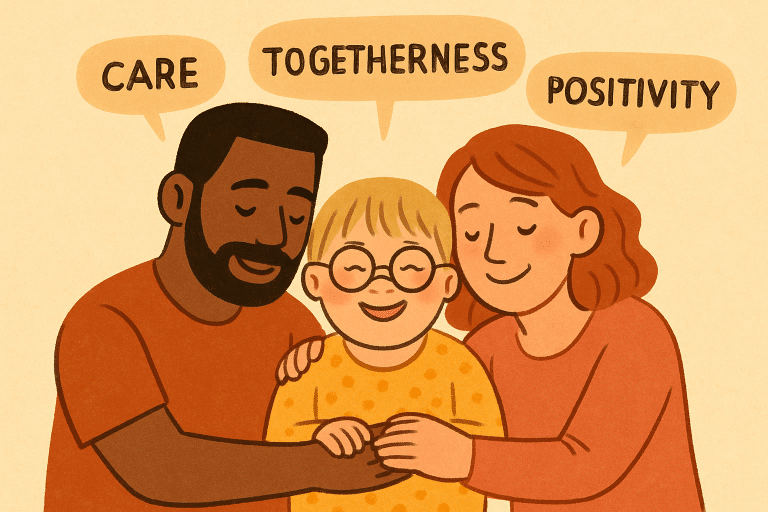Key Takeaways
- Down syndrome is characterized by distinctive physical and developmental features that can be recognized early, allowing for timely intervention.
- Prenatal screening and diagnostic tests are available to detect Down syndrome before birth, while postnatal diagnosis uses physical signs and chromosome analysis.
- Ongoing support, inclusive education, and proactive health care management are vital to enabling full participation in community life.
Recognizing the Signs of Down Syndrome
Down syndrome arises from an extra copy of chromosome 21, resulting in distinctive physical and developmental characteristics. These features often include a flat facial profile, almond-shaped eyes that slant upwards, a single deep crease across the palm, low muscle tone, and a shorter neck. In addition to these physical signs, children may experience delays in speech, learning, and motor skill development. Recognizing these early indicators can empower families to seek support and intervention as soon as possible. Parents and caregivers can benefit from exploring Down syndrome resources for further guidance and support following a diagnosis.
For those navigating a new diagnosis, having access to reliable support networks is crucial. In addition to medical consultations, connecting with community organizations, reading personal stories, and accessing expert-driven resources on Down syndrome can help families make informed decisions and feel less isolated during this journey. These resources often include information about developmental milestones, early intervention options, and links to local and national support communities.
Understanding Prenatal Screening Tests
Expectant parents can choose from several prenatal screening tests designed to estimate the risk of Down syndrome in a developing baby. According to MedlinePlus, screening tools such as first-trimester blood tests and ultrasounds assess hormone levels and check for specific markers, like nuchal translucency, that may indicate a higher risk of certain conditions. These non-invasive tests offer valuable insights but do not confirm the presence or absence of Down syndrome. Instead, they help families decide whether additional diagnostic steps are needed.
Diagnostic Tests for Confirmation
If initial screenings suggest a heightened risk, diagnostic procedures can confirm or rule out Down syndrome with high accuracy. Chorionic villus sampling (CVS) and amniocentesis are two commonly recommended tests, both of which involve obtaining fetal cells for chromosomal analysis. While these diagnostic tests are very reliable, they are invasive, carrying a slight risk of miscarriage. Families should consult closely with their healthcare provider to weigh the risks and emotional impact of these procedures before making a decision.
Postnatal Diagnosis and Early Indicators
When Down syndrome has not been diagnosed before birth, physicians often recognize the condition through physical examination in newborns. Shortened limbs, decreased muscle tone, and characteristic facial features are primary indicators that prompt further testing. A karyotype test, which involves examining the baby’s chromosomes under a microscope, is used to confirm the diagnosis. Early identification ensures quick access to appropriate healthcare professionals and developmental services, setting the stage for optimal outcomes.
Health Complications Associated with Down Syndrome
Individuals with Down syndrome can be at risk for a range of health concerns, such as congenital heart defects, respiratory and hearing problems, vision disorders, and thyroid conditions. Routine medical evaluations are essential to managing these associated health issues proactively. With the proper healthcare monitoring and interventions, many individuals lead fulfilling lives and participate in a wide array of activities. Trusted sources such as the Mayo Clinic provide thorough information on common complications and recommended care plans. Continued research and medical advancements are helping improve both the quality and length of life for people with Down syndrome. Community support, inclusive opportunities, and access to reliable resources further enhance their ability to thrive.
Early Intervention and Developmental Support
Early intervention is critical in maximizing a child’s development and future independence. Access to therapies physical, occupational, and speech is shown to dramatically improve milestones pertaining to mobility, communication, and adaptive behaviors. The sooner these specialized services begin, the greater the potential is for positive long-term results. Family involvement and collaboration among educators, therapists, and healthcare providers form the strongest foundation for every child’s progress and well-being.
Educational Opportunities and Inclusion
Inclusive education acknowledges the diverse learning styles of children with Down syndrome and promotes their full participation in mainstream classrooms. Individualized Education Programs (IEPs) are legal documents developed for students in public schools that outline goals, accommodations, and supports. Close cooperation among families, teachers, and support staff fosters a positive learning environment, enabling children to reach their full academic and social potential. Inclusive education also promotes understanding and acceptance among peers.
Accessing Support Resources
Families benefit greatly from connecting with organizations dedicated to Down syndrome advocacy and care. National and local groups offer emotional support, educational workshops, and information about legal and medical rights. Online communities, helplines, and family events help build supportive networks that can last a lifetime. Exploring available Down syndrome resources creates pathways to information, empowerment, and hope for every family navigating this journey.

